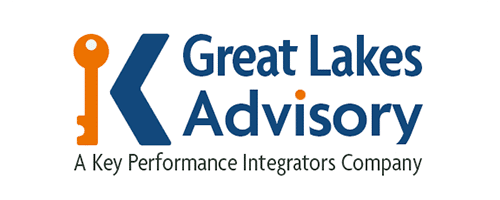As digital marketing agencies look ahead to 2023, it’s crucial to have a clear vision and plan in place to guide your efforts and ensure success. Strategic planning is the key to defining your organization’s direction and allocating resources to achieve your goals. By thoroughly analyzing your strengths, weaknesses, opportunities, and threats (SWOT analysis), setting SMART goals, and implementing a plan to bring your vision to life, you can increase efficiency, improve decision-making, enhance competitiveness, and boost stakeholder confidence.
But where do you begin? This strategic planning guide will walk you through the steps you need to take to create a comprehensive and effective strategic plan for your digital marketing agency.
Strategic planning is the process of defining an organization’s direction and making decisions on allocating its resources to pursue this direction. It involves setting goals, analyzing the competitive environment, and assessing internal and external factors that may affect the organization.

 In conclusion, strategic planning is critical for any digital marketing agency looking to succeed in 2023 and beyond. Following the steps outlined in this guide, you can define your vision and mission, conduct a SWOT analysis, set SMART goals, and create a plan to bring your vision to life. Don’t let another year pass by without a clear roadmap for success – take the time to develop a strategic plan for your digital marketing agency today.
But the process doesn’t end there. It’s important to continuously monitor and evaluate your progress to ensure that you are on track to achieve your goals. This may involve reassessing your SWOT analysis, adjusting your goals, or implementing new strategies as needed. By regularly reviewing and updating your strategic plan, you can stay ahead of the curve and adapt to changing market conditions.
So, what are you waiting for? Take the first step towards a successful 2023 by developing a comprehensive strategic plan for your digital marketing agency. With a clear vision and plan in place, you’ll be well-equipped to achieve your goals and drive success for your business.
In conclusion, strategic planning is critical for any digital marketing agency looking to succeed in 2023 and beyond. Following the steps outlined in this guide, you can define your vision and mission, conduct a SWOT analysis, set SMART goals, and create a plan to bring your vision to life. Don’t let another year pass by without a clear roadmap for success – take the time to develop a strategic plan for your digital marketing agency today.
But the process doesn’t end there. It’s important to continuously monitor and evaluate your progress to ensure that you are on track to achieve your goals. This may involve reassessing your SWOT analysis, adjusting your goals, or implementing new strategies as needed. By regularly reviewing and updating your strategic plan, you can stay ahead of the curve and adapt to changing market conditions.
So, what are you waiting for? Take the first step towards a successful 2023 by developing a comprehensive strategic plan for your digital marketing agency. With a clear vision and plan in place, you’ll be well-equipped to achieve your goals and drive success for your business.

Strategic planning is important for several reasons:
Helps to define the organization’s direction: Strategic planning helps define the organization’s long-term goals and objectives, which provides a clear sense of purpose and direction. This helps to ensure that the organization is focused on its mission and is working towards meaningful goals. Improves decision-making: By analyzing internal and external factors, strategic planning helps to inform decision-making and ensure that resources are allocated in a way that aligns with the organization’s goals. This helps avoid misalignment and ensures that the organization makes informed well-thought-out decisions. Increases efficiency and productivity: By setting clear goals and aligning resources towards achieving those goals, strategic planning helps to increase efficiency and productivity. This is because the organization is focused on its most important priorities and is not wasting time or resources on unimportant tasks. Enhances competitiveness: By analyzing the competitive environment and identifying opportunities and threats, strategic planning helps to enhance competitiveness. This is because the organization can adapt to changing market conditions and take advantage of new opportunities. Increases stakeholder confidence: By having a clear plan for the future, strategic planning helps to increase stakeholder confidence. This is because stakeholders can see that the organization is well-managed and has a clear vision for the future. Overall, strategic planning is an essential tool for ensuring that an organization is able to achieve its goals and objectives and is well-positioned to respond to changing market conditions.An effective framework for strategic planning typically includes the following steps:
Define your vision and mission:
Clearly articulate your organization’s purpose and goals and how you plan to achieve them.
Defining your vision and mission is an important exercise within strategic planning because it helps to provide direction and purpose for your organization. Your vision is a statement that outlines your long-term goals and aspirations for the future, while your mission is a statement that describes your purpose and the specific actions you will take to achieve your vision. For a digital marketing agency, defining your vision and mission can help to guide your decision-making and ensure that your efforts are aligned with your long-term goals. It can also help to differentiate your agency from competitors and establish your unique value proposition. To define your vision and mission, conducting a SWOT (Strengths, Weaknesses, Opportunities, Threats) analysis helps understand your current capabilities and the external factors that may impact your business. You can also engage in discussions with your team to gather input and ensure that the vision and mission reflect the values and goals of your organization. If you do not define your vision and mission, you may lack a clear sense of direction and purpose, leading to confusion and lack of focus within your organization. This can negatively impact your ability to achieve your goals and may result in missed opportunities or inefficient use of resources. Therefore, it is important to take the time to define your vision and mission as part of your strategic planning process.Conduct a SWOT analysis:
Identify your organization’s strengths, weaknesses, opportunities, and threats to help inform your strategic planning process.
Conducting a SWOT analysis is an important part of the strategic planning process. SWOT stands for Strengths, Weaknesses, Opportunities, and Threats. It is a tool used to assess an organization’s internal and external environment and to identify the internal and external factors that may impact its ability to achieve its objectives. The benefits of conducting a SWOT analysis for a digital marketing agency include:- Identifying opportunities for growth and expansion: A SWOT analysis can help a digital marketing agency identify new opportunities for growth and expansion by analyzing the external environment.
- Strengthening competitive advantage: By identifying the agency’s strengths and weaknesses, a SWOT analysis can help the agency develop strategies to strengthen its competitive advantage and overcome its weaknesses.
- Identifying potential threats: A SWOT analysis can also help the agency identify potential threats to its business, such as changes in customer preferences or new competitors entering the market.
Set specific, measurable, achievable, relevant, and time-bound (SMART) goals:
Use the SMART goal framework to define specific, measurable, achievable, relevant, and time-bound goals for your organization.
The SMART goal framework is a commonly used method for setting specific, measurable, achievable, relevant, and time-bound goals. This framework helps to ensure that goals are clear and actionable, making it easier to create a plan to achieve them. Using the SMART goal framework is important within strategic planning because it helps to ensure that the goals align with the organization’s overall vision and mission. Setting specific, measurable goals makes it possible to track progress toward those goals and make adjustments as needed. The SMART goal framework also helps to ensure that the set goals are achievable and relevant to the organization. This helps to focus efforts on activities that are likely to lead to success rather than wasting time and resources on goals that are not realistic or aligned with the organization’s goals. Finally, setting time-bound goals helps create a sense of urgency and accountability within the organization, as team members know that they need to work towards specific deadlines. Here’s an example of how to create a SMART goal for a digital marketing agency: Example: Goal: Increase website traffic by 25% in Q1 2023 SMART goal: Increase website traffic from 50,000 visits per month to 62,500 visits per month in Q1 2023 through targeted social media advertising campaigns and search engine optimization (SEO) efforts. Specific: Increase website traffic by 25% in Q1 2023 Measurable: Increase website traffic from 50,000 visits per month to 62,500 visits per month Achievable: The goal is achievable with targeted social media advertising campaigns and SEO efforts Relevant: Increasing website traffic aligns with the overall goals of the digital marketing agency to drive leads and sales Time-bound: The goal is specific to Q1 2023 By setting this SMART goal, the digital marketing agency has a clear and specific target to work towards, and they can measure their progress towards the goal by tracking website traffic on a monthly basis. The goal is also achievable with the implementation of targeted advertising campaigns and SEO efforts, and it aligns with the agency’s overall goals. By setting a time-bound deadline of Q1 2023, the agency has a sense of urgency to work towards achieving the goal. Overall, the SMART goal framework is an important tool within strategic planning because it helps to ensure that the goals set are clear, actionable, and aligned with the overall vision and mission of the organization. This can help to increase the chances of success and drive progress toward the organization’s long-term goals.Develop a strategic plan:
Outline the specific actions and resources needed to achieve your goals and bring your vision to life.
Here is an example of a strategic plan for a digital marketing agency: Vision: To be the leading digital marketing agency in our region, known for providing innovative and effective solutions that help our clients grow their businesses. Mission: To provide our clients with high-quality digital marketing services that drive tangible business results. SWOT analysis:- Strengths: Experienced team of digital marketing experts, a strong reputation in the industry, diverse range of services offered.
- Weaknesses: Limited resources and capacity to take on new clients, lack of specialization in certain areas of digital marketing.
- Opportunities: Growing demand for digital marketing services, potential to expand into new markets and industries.
- Threats: Increasing competition from other agencies, rapid changes in technology, and consumer behavior.
- Increase revenue by 15% in the next year by targeting new markets and industries and expanding our service offerings.
- Improve customer satisfaction by 10% in the next year by implementing a customer feedback system and using the insights to continuously improve our services.
- Increase employee retention by 5% in the next year by implementing a comprehensive training and development program and offering competitive benefits and perks.
- Expand our reach and visibility in the industry by participating in at least three industry events and publishing at least two thought leadership articles per quarter.
- Research and target new markets and industries to pursue.
- Develop new service offerings to meet the needs of these markets.
- Create a customer feedback system and analyze the insights to improve our services.
- Implement a training and development program for employees.
- Review and potentially enhance employee benefits and perks.
- Identify and participate in industry events and conferences.
- Publish thought leadership articles in relevant industry publications.
Implement the plan:
Put your strategic plan into action, and allocate resources and responsibilities as needed.
Implementing your strategic plan involves taking the steps and actions outlined to bring it to life and achieve your goals. Here are some steps to follow when implementing your strategic plan: Assign responsibilities: Determine who will be responsible for each key action and assign tasks accordingly. Make sure to assign clear roles and responsibilities to ensure that everyone knows what is expected of them. Allocate resources: Determine the resources (e.g., budget, personnel, time) needed to carry out the key actions in your strategic plan. Allocate these resources in a way that is aligned with your goals and priorities.Monitor and evaluate progress:
Regularly track and measure progress toward your goals to ensure that your strategic plan is being implemented effectively. Use key performance indicators (KPIs) to measure progress and identify any areas that may need adjustment.
Monitoring and evaluating progress within strategic planning is important because it allows you to track your progress toward your goals and make any necessary adjustments to your plan. It helps you determine whether your actions and resources are aligned with your vision and mission and whether you are making progress toward your desired outcomes. By regularly monitoring and evaluating progress, you can identify any challenges or obstacles that may be hindering your progress and take action to address them. It also helps you identify any opportunities for improvement and make necessary changes to your plan to capitalize on these opportunities. In addition, monitoring and evaluating progress helps you stay accountable to your plan and ensures that you make the most of your resources. It allows you to identify any areas where you may fall short and make necessary adjustments to your plan to ensure that you are on track to achieve your goals. As you implement your strategic plan, you may encounter challenges or opportunities that require adjustments to your plan. Be flexible and adaptable, and don’t be afraid to make changes as needed to ensure that you are on track to achieve your goals. In conclusion, strategic planning is critical for any digital marketing agency looking to succeed in 2023 and beyond. Following the steps outlined in this guide, you can define your vision and mission, conduct a SWOT analysis, set SMART goals, and create a plan to bring your vision to life. Don’t let another year pass by without a clear roadmap for success – take the time to develop a strategic plan for your digital marketing agency today.
But the process doesn’t end there. It’s important to continuously monitor and evaluate your progress to ensure that you are on track to achieve your goals. This may involve reassessing your SWOT analysis, adjusting your goals, or implementing new strategies as needed. By regularly reviewing and updating your strategic plan, you can stay ahead of the curve and adapt to changing market conditions.
So, what are you waiting for? Take the first step towards a successful 2023 by developing a comprehensive strategic plan for your digital marketing agency. With a clear vision and plan in place, you’ll be well-equipped to achieve your goals and drive success for your business.
In conclusion, strategic planning is critical for any digital marketing agency looking to succeed in 2023 and beyond. Following the steps outlined in this guide, you can define your vision and mission, conduct a SWOT analysis, set SMART goals, and create a plan to bring your vision to life. Don’t let another year pass by without a clear roadmap for success – take the time to develop a strategic plan for your digital marketing agency today.
But the process doesn’t end there. It’s important to continuously monitor and evaluate your progress to ensure that you are on track to achieve your goals. This may involve reassessing your SWOT analysis, adjusting your goals, or implementing new strategies as needed. By regularly reviewing and updating your strategic plan, you can stay ahead of the curve and adapt to changing market conditions.
So, what are you waiting for? Take the first step towards a successful 2023 by developing a comprehensive strategic plan for your digital marketing agency. With a clear vision and plan in place, you’ll be well-equipped to achieve your goals and drive success for your business.